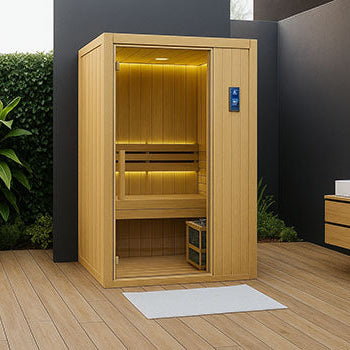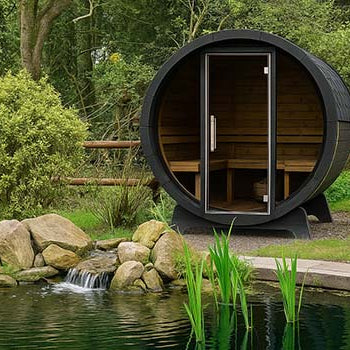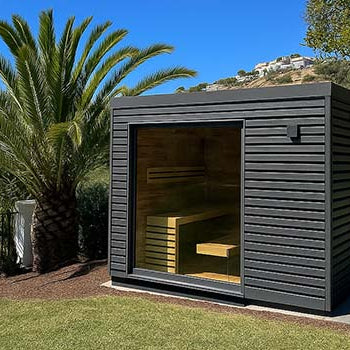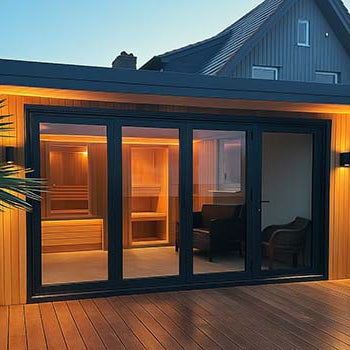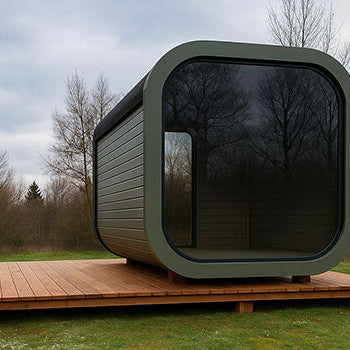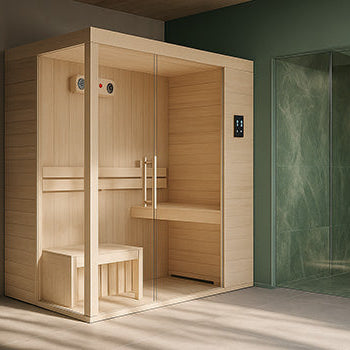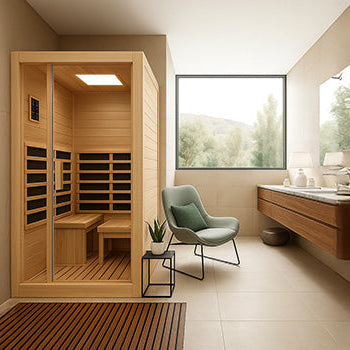Worried your sauna’s giving off more than just feel-good heat?
Short answer: infrared saunas with carbon heaters tend to have the lowest EMF.
From cosy indoor corners to steamy outdoor sanctuaries, we’re about to dive into the safest sauna picks out there.
And trust us—you deserve more than a mysterious electromagnetic buzz during your ‘me-time’.
Let’s uncover how to truly relax, with peace of mind.

Understanding EMF Exposure in Different Sauna Types
What Are Electromagnetic Fields (EMF)?
Electromagnetic fields (EMF) are like invisible zones of energy—always around us, mostly harmless in small doses.
They come from electronic devices, wiring, and appliances—yes, including your sauna.
In a sauna, it’s the heating elements and internal electronics doing the buzzing.
While you won’t feel EMFs physically, they’re measurable, and some people are especially sensitive to them.
The closer you are to a heat source, the more exposure you get—and that’s what makes the type of sauna you choose so important.
Why EMF is a Consideration in Saunas (Electric Heaters)
Saunas are supposed to help you unplug, not buzz you up.
But here’s the thing: most modern saunas run on electricity, which means they naturally emit EMFs.
Infrared saunas, in particular place heaters close to your body—great for deep heat, but not ideal if you’re EMF-conscious.
That’s why many wellness-savvy folks now shop based on both heat quality and EMF levels.
It’s not just about sweating—it’s about how safe the space is while you do it.
EMF Levels in Different Sauna Types
Wood-Fired Saunas: The Zero-EMF Heating Option
Let’s go old-school for a moment.
A crackling wood-fired sauna brings you back to nature, with zero wires, zero electronics, and absolutely zero EMF.
You light it, you sweat, you unwind—simple as that.
It’s the ultimate off-grid option for EMF-sensitive users, especially outdoors.
If peace, quiet, and total tech-free bliss sound like your kind of bliss, this one’s for you.
Traditional Electric Saunas: EMF Location and User Distance
Traditional saunas crank up the heat with wired heaters that warm the air—efficient, yes, but not EMF-free.
The good news? The heat source is usually tucked away at a distance.
That space between you and the heater gives you a little breathing room—literally and energetically.
But EMF levels can still vary wildly, depending on the sauna’s build.
If you’re eyeing a traditional model, make sure it’s properly wired and ideally EMF-shielded.
Infrared Saunas: Heater Proximity and EMF Considerations
Infrared saunas are the darlings of home wellness.
They use targeted heat to warm you from the inside out—fast, efficient, and deeply relaxing.
But here’s the catch: those heaters are up close and personal.
That means you’re sitting just inches from the EMF source, unless the model’s been specifically designed to reduce it.
Look for infrared saunas that highlight “low EMF” or “ultra-low EMF” in their specs—especially if they use carbon panels.
Understanding "Low EMF" and "Ultra-Low EMF" Infrared Technology

Design Features: Shielding, Heater Types (Carbon vs. Ceramic), Wiring
Want the safest sauna? Look under the hood.
The best low-EMF infrared saunas use carbon fibre heaters, known for gentler, more even heat and significantly reduced EMF output.
Some models go the extra mile with shielding over wires and strategic heater placement.
Even the way wires are run can impact EMF levels—clean, minimal wiring = lower exposure.
If you're choosing between heater types:
Carbon = lower EMF and broader heat; ceramic = stronger pinpoint heat but often higher EMF.
Interpreting Manufacturer Claims and Certifications (e.g., <1mG or <3mG)
“Low EMF” sounds reassuring—until you realise everyone says it.
What does it mean?
Generally, “ultra-low EMF” means below 1 milligauss (mG), while “low EMF” hovers around 1–3 mG.
But the real proof is in third-party testing.
Look for brands that provide clear, documented results, tested at realistic distances (not just at the wall).
If it’s just marketing fluff with no data? Swipe left.
Assessing and Comparing EMF Levels
Importance of Testing Methodology and Distance
You can’t judge EMF without knowing how it’s measured.
Some brands test from 30 cm away—others right next to the heater.
That makes a difference.
What looks “low” from a metre away could be sky-high when you’re sitting inches from it.
Trust only results that reflect real-world usage.
If the sauna is tested at a typical seating distance and still shows readings under 3 mG, it’s a solid pick.
Conclusion: Identifying Low-EMF Sauna Options

Let’s wrap it up—what should you choose?
Infrared saunas with carbon fibre heaters and proper shielding consistently show the lowest EMF levels.
If you want zero EMF, a wood-burning outdoor sauna wins hands down.
For indoor solutions, prioritise models with third-party EMF reports, clear heater specs, and quality wiring.
Brands like Health Mate, Clearlight, and JNH Lifestyles are front-runners in the UK market, offering safe, low-EMF saunas across various styles and sizes.
In the end, a smart sauna choice means no compromises—just pure heat, peace, and wellness.
So go ahead—sweat it out, safely.
